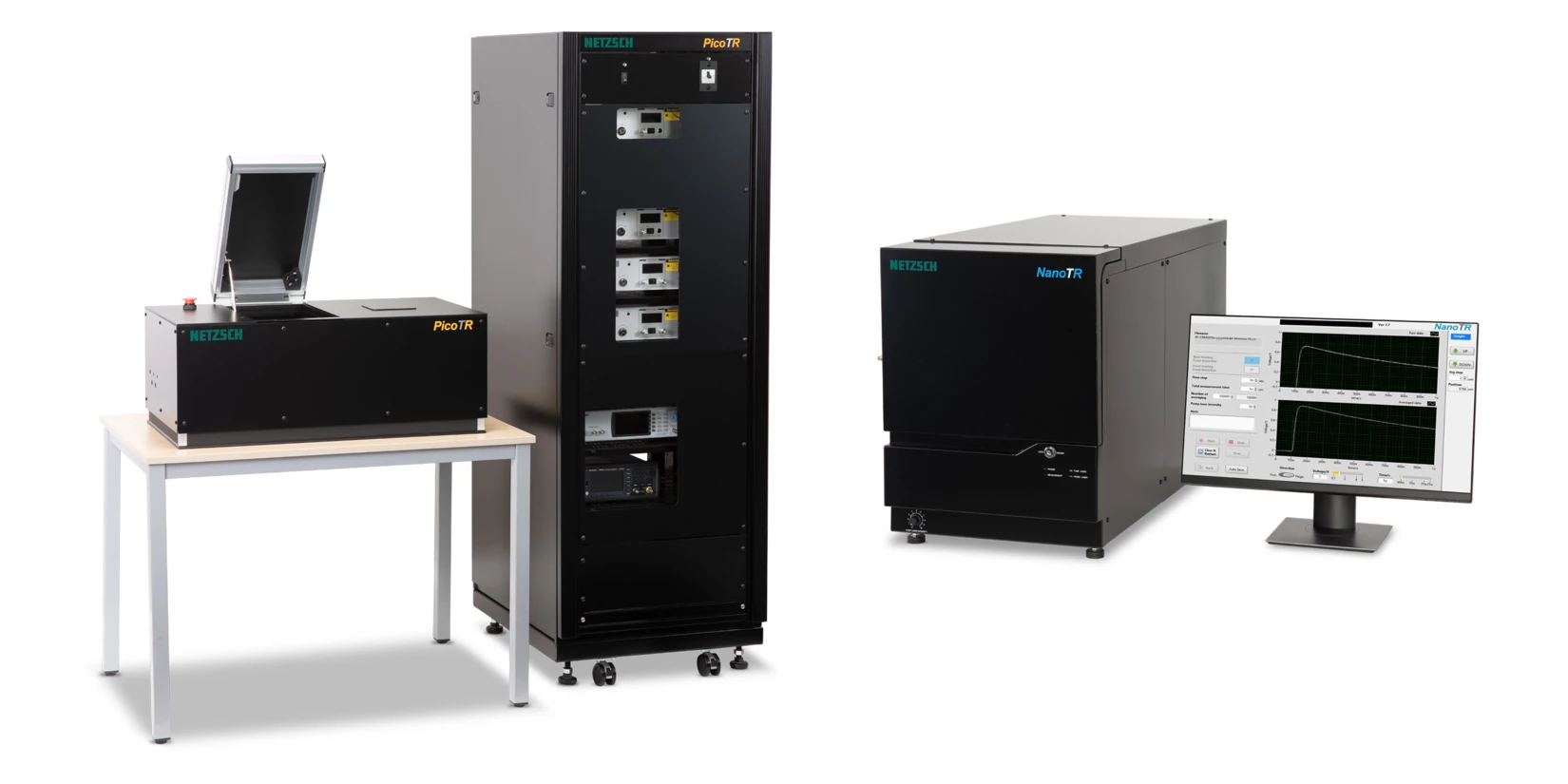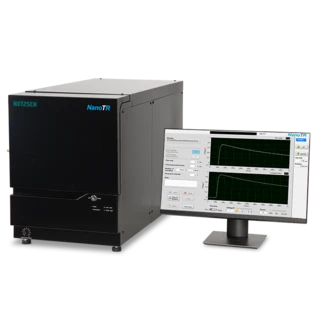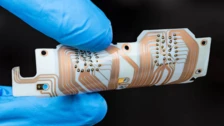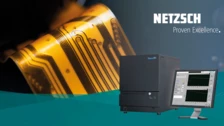
TDTR
Time Domain Thermoreflectance Analyzer
ThermoreflectanceThermoreflectance is a method for determining the thermal diffusivity and thermal conductivity of thin films with thicknesses in the nanometer range.Thermoreflectance is a method for determining the Thermal DiffusivityThermal diffusivity (a with the unit mm2/s) is a material-specific property for characterizing unsteady heat conduction. This value describes how quickly a material reacts to a change in temperature.thermal diffusivity and Thermal ConductivityThermal conductivity (λ with the unit W/(m•K)) describes the transport of energy – in the form of heat – through a body of mass as the result of a temperature gradient (see fig. 1). According to the second law of thermodynamics, heat always flows in the direction of the lower temperature.thermal conductivity of thin films with thicknesses in the nanometer range.
The National Institute of Advanced Industrial Science and Technology (AIST), Japan, already responded to industrial requirements with the development of a “pulsed light heating ThermoreflectanceThermoreflectance is a method for determining the thermal diffusivity and thermal conductivity of thin films with thicknesses in the nanometer range.thermoreflectance method” in the early 90’s. PicoTherm Corporation was established in 2008 with the launch of a nano-second ThermoreflectanceThermoreflectance is a method for determining the thermal diffusivity and thermal conductivity of thin films with thicknesses in the nanometer range.thermoreflectance apparatus “NanoTR” and a pico-second ThermoreflectanceThermoreflectance is a method for determining the thermal diffusivity and thermal conductivity of thin films with thicknesses in the nanometer range.thermoreflectance apparatus “PicoTR”, which allows for absolute measurements of the Thermal DiffusivityThermal diffusivity (a with the unit mm2/s) is a material-specific property for characterizing unsteady heat conduction. This value describes how quickly a material reacts to a change in temperature.thermal diffusivity of thin films in a thickness range of several 10 μm down into the nanometer range.
In October 2020, PicoTherm joined the NETZSCH Group as a subsidiary of NETZSCH Japan. In combination with our LFA systems, NETZSCH can now offer the solution for thin films in the nanometer range up to bulk materials in the range of mm.
Thermoreflectance by Pulsed Light Heating
In contrast with the conventional laser flash method, there is no infrared detector used to measure the temperature increase in the sample following a short laser pulse. Instead, the temperature-dependent reflectivity of a surface is used to generate the measurement signal (voltage change).
The thin film is heated by a short laser pulse (pump laser). At the same time, an additional laser (probe laser) is left on continuously. The laser light of the probe laser is reflected by the film surface to the detector. The absolute value of voltage change in the detector is proportional to the temperature change of the film’s surface. A model calculation on the basis of the voltage change (thermogram) yields the thermal diffusion time and Thermal DiffusivityThermal diffusivity (a with the unit mm2/s) is a material-specific property for characterizing unsteady heat conduction. This value describes how quickly a material reacts to a change in temperature.thermal diffusivity of thin films.
The thermal diffusion time (t) is dependent on the thickness (d) and Thermal DiffusivityThermal diffusivity (a with the unit mm2/s) is a material-specific property for characterizing unsteady heat conduction. This value describes how quickly a material reacts to a change in temperature.thermal diffusivity (a). The possible thermal diffusion time ranges can be seen in figure 1. The lower limit for the LFA 467, for example, is ~500 µs which is comparable to a copper plate with a thickness of 200 µm. In contrast with this, the PicoTR (pico-second ThermoreflectanceThermoreflectance is a method for determining the thermal diffusivity and thermal conductivity of thin films with thicknesses in the nanometer range.thermoreflectance apparatus) is able to measure a molybdenum film with a thickness of 100µm. For applications in the range between the LFA and PicoTR, the more cost-effective NanoTR (nano-second ThermoreflectanceThermoreflectance is a method for determining the thermal diffusivity and thermal conductivity of thin films with thicknesses in the nanometer range.thermoreflectance apparatus) is available.

Our Products
- NanoTR

Time DomainA time domain analysis is based on changes in physical signals related to time. A time-domain graph shows how a signal changes over time. In the case of thermoreflectance or the laser flash method, the detector signal (voltage change) is recorded – at a minimum – over the time range between the energy input and the signal maximum (e.g., RF mode) or as a function of the expected heat diffusion time (e.g., FF mode).Time Domain ThermoreflectanceThermoreflectance is a method for determining the thermal diffusivity and thermal conductivity of thin films with thicknesses in the nanometer range.Thermoreflectance using Pulsed Light Heating
- Pulse width: 1 ns
- 30 nm ... 20 μm Sample Thickness
- 0.01 ... 1000 mm²/s Range
- PicoTR

Time DomainA time domain analysis is based on changes in physical signals related to time. A time-domain graph shows how a signal changes over time. In the case of thermoreflectance or the laser flash method, the detector signal (voltage change) is recorded – at a minimum – over the time range between the energy input and the signal maximum (e.g., RF mode) or as a function of the expected heat diffusion time (e.g., FF mode).Time Domain ThermoreflectanceThermoreflectance is a method for determining the thermal diffusivity and thermal conductivity of thin films with thicknesses in the nanometer range.Thermoreflectance using Pulsed Light Heating
- Pulse width: 0.5 ps
- 10 nm ... 900 nm Sample Thickness
- 0.01 ... 1000 mm²/s Range





